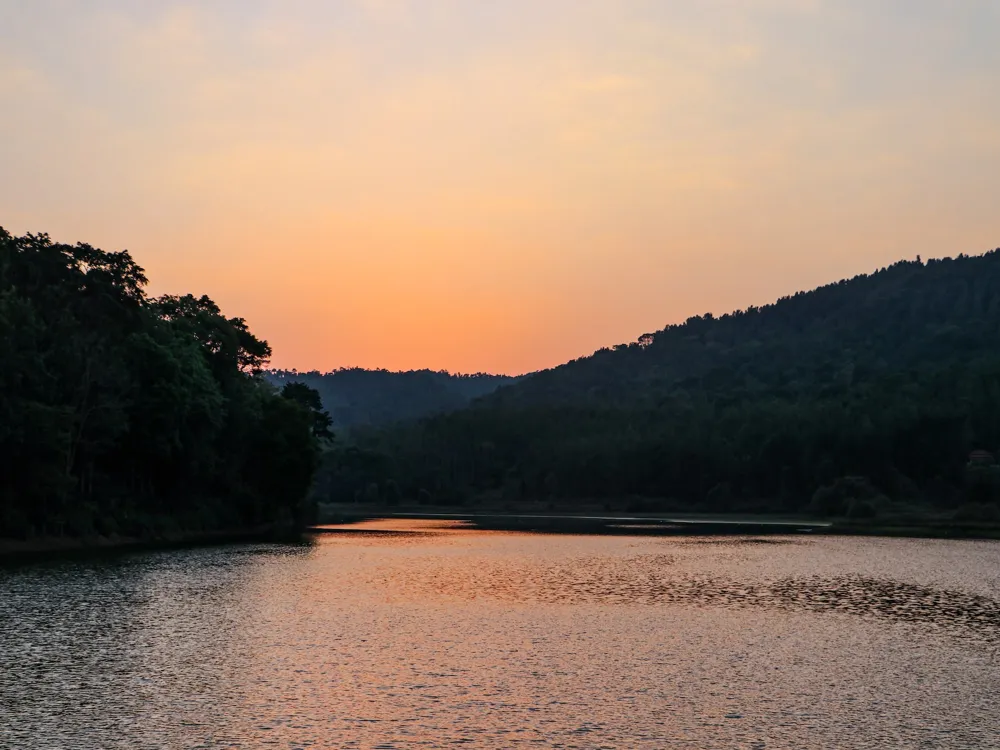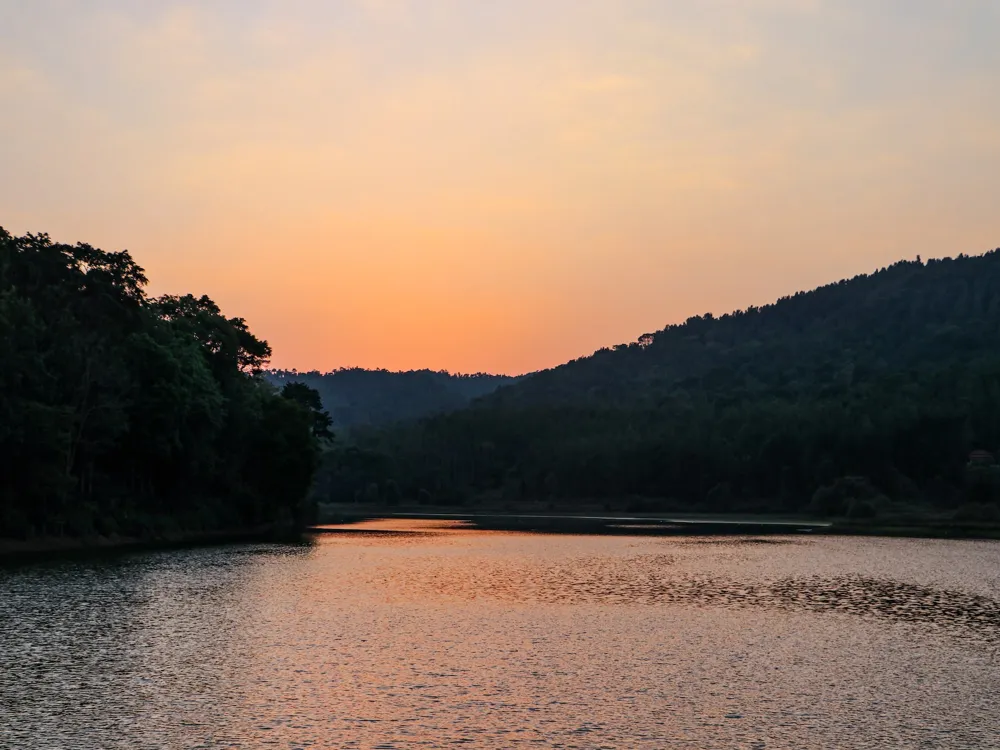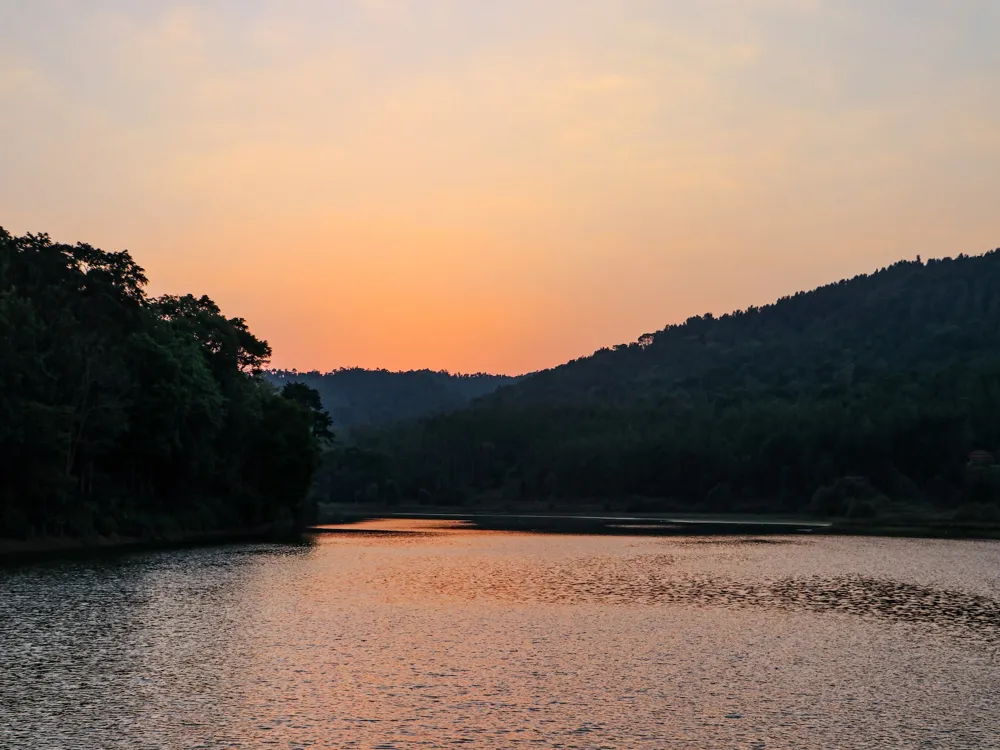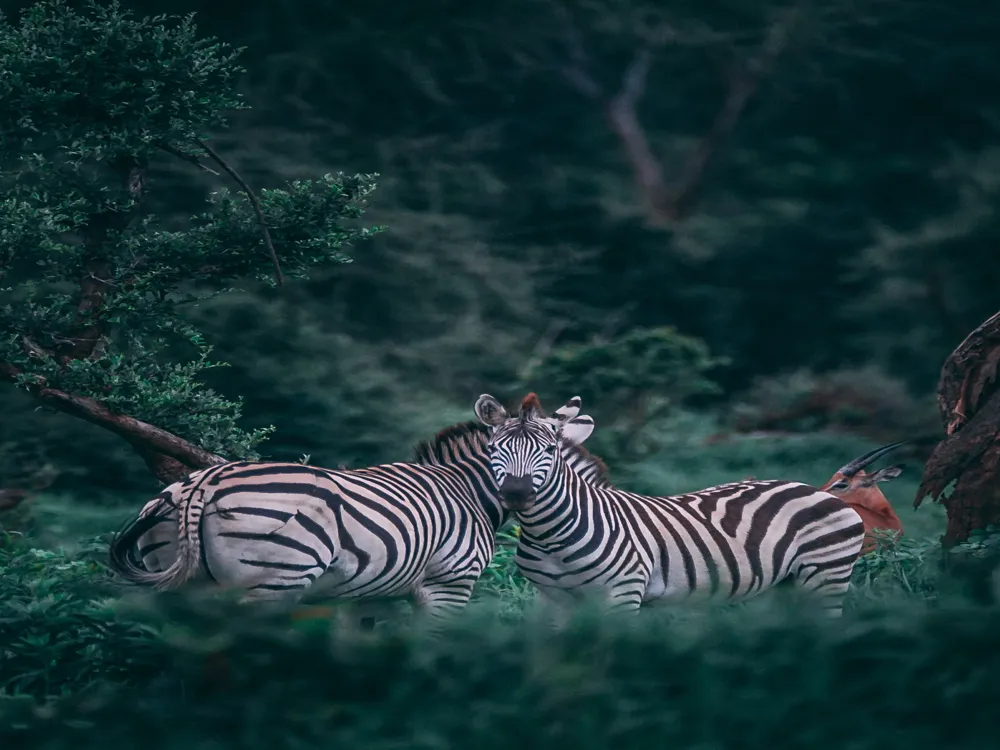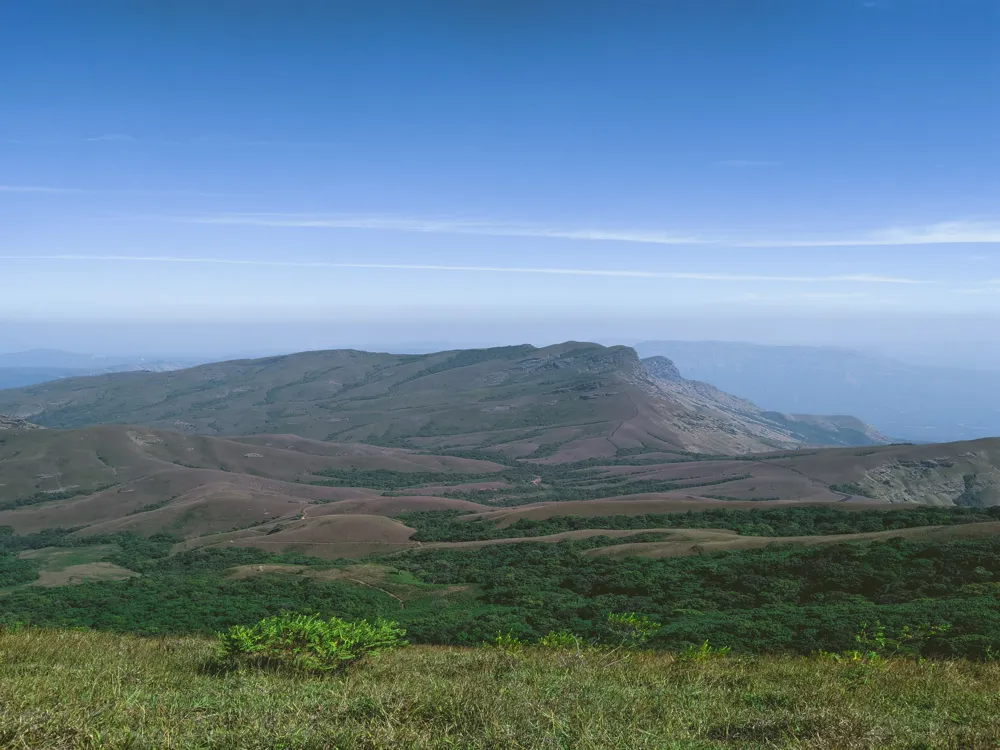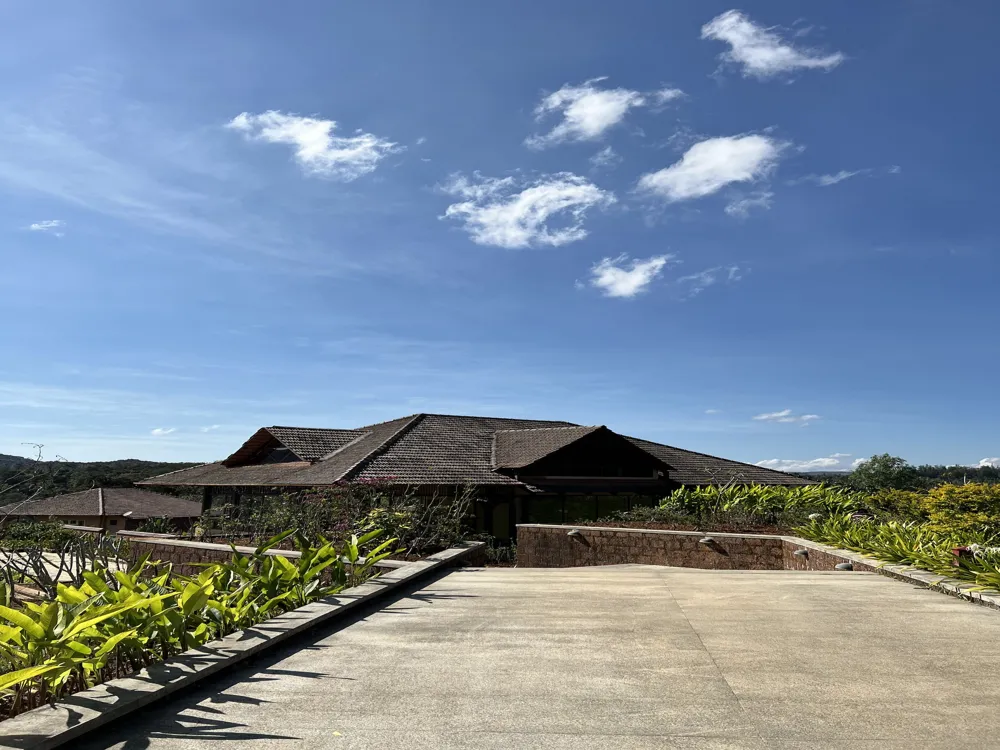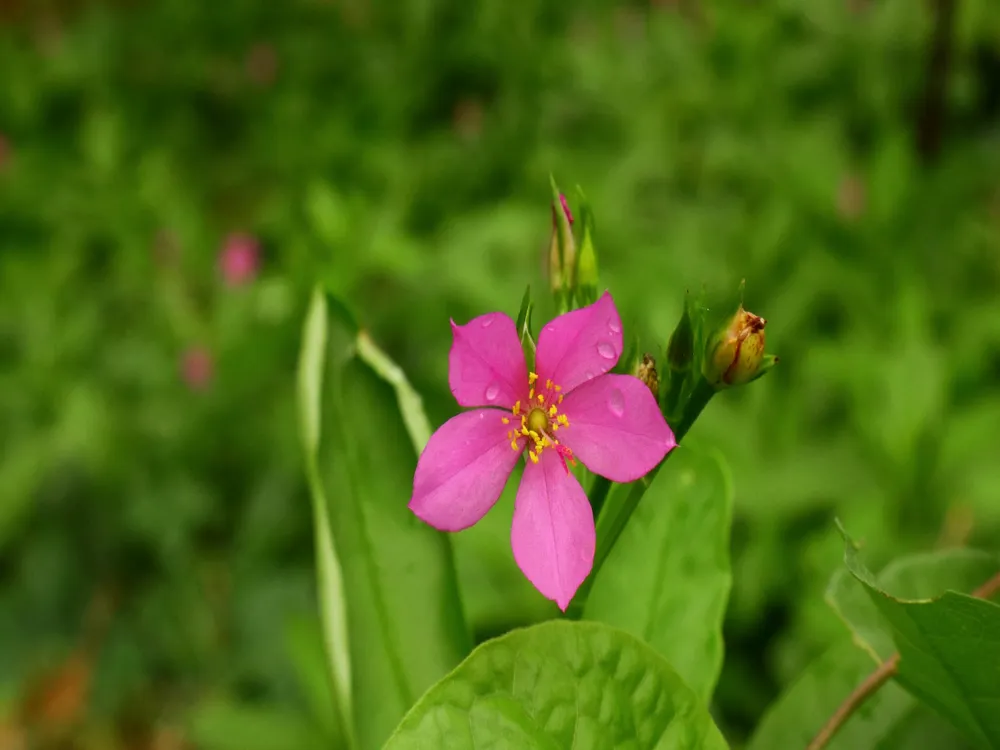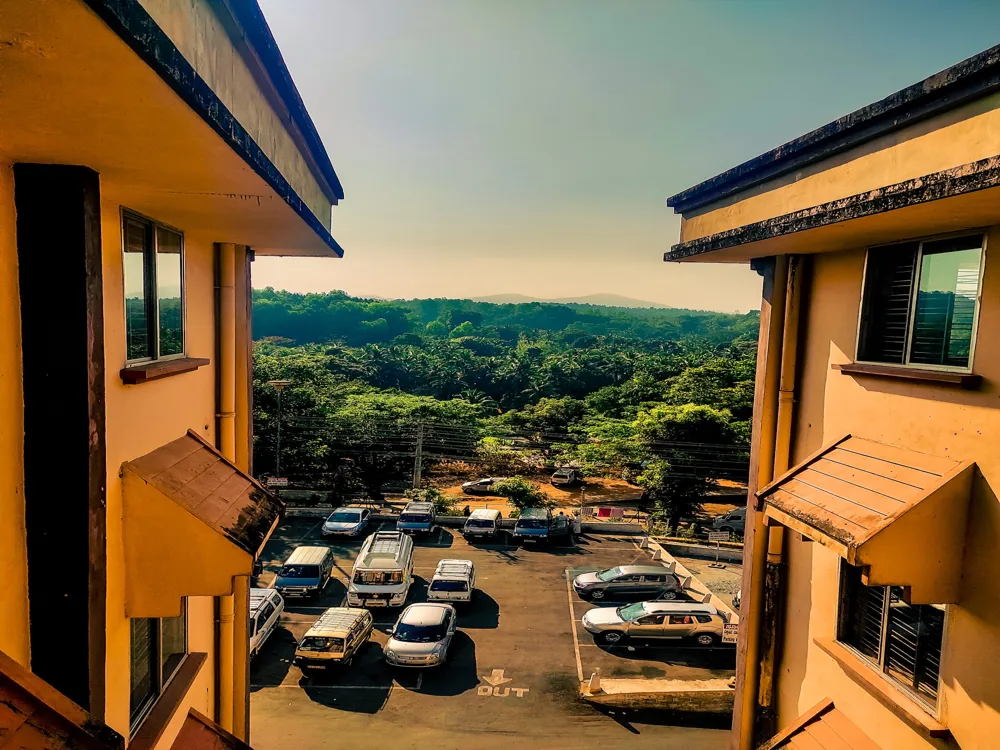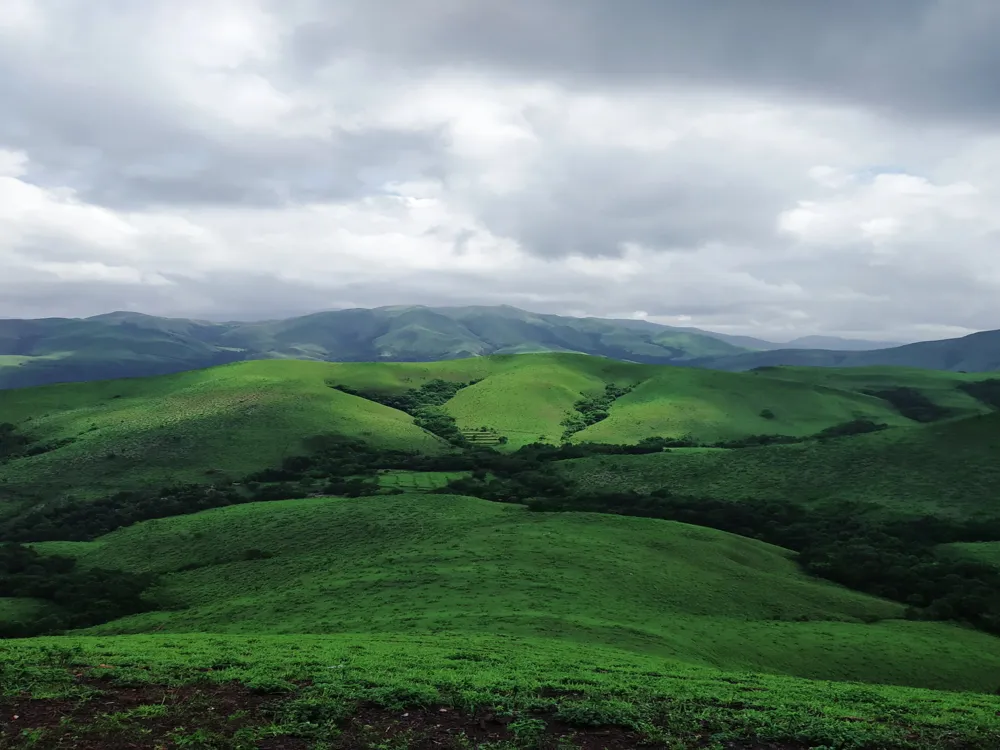Nestled in the Western Ghats of Karnataka, Chikmagalur is a serene hill station known for its breathtaking landscapes and rich cultural heritage. Often referred to as the 'Coffee Land of Karnataka', it stands out for its lush green coffee plantations, misty hills, and tranquil environment. The town's name, Chikmagalur, means 'younger daughter's town' in the local language, Kannada. This name is derived from a legend that the land was given as a dowry to the younger daughter of Rukmangada, the legendary chief of Sakharayapatna.
Chikmagalur's history is steeped in intriguing tales and cultural influences from various dynasties like the Hoysalas and the Vijayanagara Empire, which have left an indelible mark on its architectural and cultural fabric. It's a place where history and nature converge, offering visitors a unique blend of scenic beauty and historical intrigue. The town's elevation, ranging from 780 meters (2,560 feet) to 1,900 meters (6,200 feet) above sea level, provides it with a pleasant climate throughout the year, making it a perfect retreat for nature lovers, trekkers, and those seeking a peaceful getaway.
Chikmagalur's history is rich and varied, dating back to the early centuries. The region was ruled by various empires and dynasties, each contributing to its cultural and architectural landscape. From the powerful Hoysalas to the Vijayanagara Empire, and later the Mysore Wodeyars, each era brought with it unique styles and influences, shaping the town's heritage. This historical melange is evident in the ancient temples, forts, and structures scattered throughout the region, making it a fascinating destination for history buffs and cultural enthusiasts.
The geographical landscape of Chikmagalur is characterized by its undulating hills, lush valleys, and sparkling streams. It is part of the Western Ghats, one of the world's eight 'hottest hotspots' of biological diversity. The region's topography varies from flat and rolling plains to steep hills, offering a diverse range of flora and fauna. This varied landscape not only provides a stunning backdrop for tourists but also supports a variety of wildlife and plant species, making it a biodiversity hotspot.
The culture of Chikmagalur is a beautiful amalgamation of traditional Kannada customs and influences from the various empires that ruled the region. Festivals, art, dance, and music form an integral part of the town's cultural fabric. The local festivals, celebrated with great enthusiasm, reflect the rich heritage and traditions of Karnataka. The town also offers a culinary journey through its unique flavors and traditional Kannada cuisine, providing a delightful experience for food enthusiasts.
The architecture in Chikmagalur is a testament to the region's rich historical and cultural legacy. From ancient temples to historic forts, the architectural styles in Chikmagalur are diverse and fascinating. The influence of various dynasties, including the Hoysalas and Vijayanagara Empire, is prominently visible in the architectural designs and patterns.
The Hoysala Empire, which ruled over most of Karnataka, has left a lasting legacy in Chikmagalur through its unique architectural style. Hoysala architecture is renowned for its intricate carvings, detailed sculptures, and soapstone temples. The temples in and around Chikmagalur, such as the Veera Narayana Temple in Belavadi and the Amruteshwara Temple in Amruthapura, are exemplary of this style. These temples are characterized by star-shaped platforms, intricately carved pillars, and detailed depictions of Hindu mythology.
Following the Hoysalas, the Vijayanagara Empire's influence brought a different architectural style to Chikmagalur. This style is marked by its emphasis on grandeur and fortifications. The forts and ruins in the region, like the Ballalarayana Durga Fort, are indicative of the military architecture of the Vijayanagara period. These structures are known for their massive walls, large moats, and well-planned layouts, reflecting the empire's focus on strength and defense.
The British colonial period also contributed to Chikmagalur's architectural diversity. This era introduced European styles, evident in bungalows, churches, and administrative buildings. The colonial architecture in Chikmagalur is characterized by its simplistic yet elegant designs, large verandas, and sprawling estates, particularly in the coffee plantation areas. These structures stand as a reminder of the town's more recent history and its integration into the global narrative.
The best time to visit Chikmagalur is between September and May, when the weather is pleasant and conducive for exploring the outdoors. The monsoon season, from June to September, brings heavy rainfall, making trekking and outdoor activities challenging.
Local transportation in Chikmagalur includes buses, auto-rickshaws, and taxis. For a more immersive experience, consider renting a bike or a car to explore the region at your own pace.
Chikmagalur offers a range of accommodation options, from luxury resorts to budget homestays. Staying in a coffee estate can provide a unique experience, immersing you in the local culture and natural beauty of the region.
Don't miss out on trying the local Kannada cuisine, which is known for its flavorsome vegetarian and non-vegetarian dishes. Coffee is a must-try in Chikmagalur, given its reputation as the birthplace of coffee in India.
When visiting temples and religious sites, dress modestly and respect local customs. It's always good to seek permission before taking photographs of locals or private properties.
Chikmagalur is well-connected by road to major cities in Karnataka. The nearest airport is in Mangalore, about 160 kilometers away, while the closest railway station is in Kadur, 40 kilometers from Chikmagalur. Regular bus services and taxis are available from these points to reach Chikmagalur.
Overview of Chikmagalur, Karnataka
Historical Significance
Geographical Landscape
Cultural Mosaic
Architecture of Chikmagalur
Hoysala Architecture
Vijayanagara Influence
Colonial Architecture
Tips When Visiting Chikmagalur
Best Time to Visit
Local Transportation
Accommodation
Local Cuisine
Cultural Etiquette
How To Reach Chikmagalur
Ballalarayana Durga Fort
Chikmagalur
Karnataka
NaN onwards
View chikmagalur Packages
Weather :
Tags : Forts & Palaces
Time Required : 2 - 4 hrs to trek up and down the hill
Timings : 6:30 AM to 6:30 PM, Daily
Planning a Trip? Ask Your Question
Chikmagalur Travel Packages
View All Packages For Chikmagalur
Top Hotel Collections for Chikmagalur

Private Pool

Luxury Hotels

5-Star Hotels

Pet Friendly
Top Hotels Near Chikmagalur
Other Top Ranking Places In Chikmagalur
View All Places To Visit In chikmagalur
View chikmagalur Packages
Weather :
Tags : Forts & Palaces
Time Required : 2 - 4 hrs to trek up and down the hill
Timings : 6:30 AM to 6:30 PM, Daily
Planning a Trip? Ask Your Question
Chikmagalur Travel Packages
View All Packages For Chikmagalur
Top Hotel Collections for Chikmagalur

Private Pool

Luxury Hotels

5-Star Hotels

Pet Friendly







